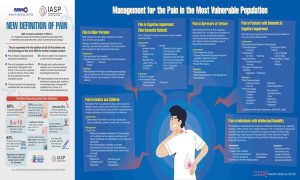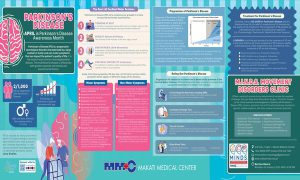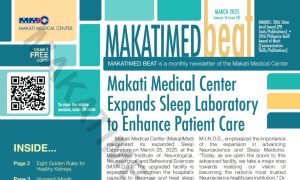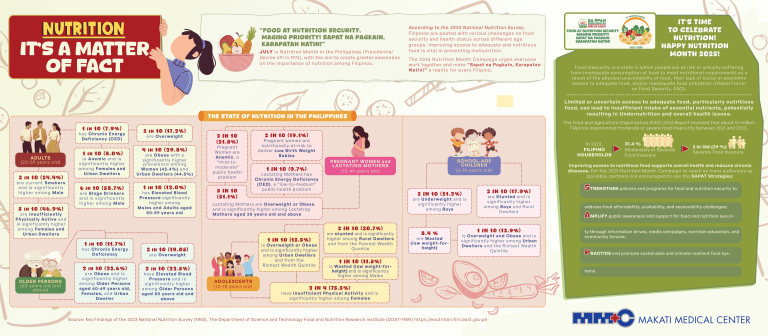Bones and joints play a pivotal role in giving the body its physical capabilities, including a wide range of movements. Clearly, bone and joint health are valuable investments, especially toward one’s senior years. Neglecting them could result in chronic pains and potential disability.
Difference Between Bones and Joints
While bones and joints have a linked relationship and function almost similarly in the body, these two (2) are distinct.
Bones are living tissue made up of collagen and calcium phosphate, making them strong yet flexible. This composition provides shape and support to the body. Aside from contributing to the body’s movement, bones also act as a shield for softer organs, best demonstrated by the ribs in the chest for the heart and lungs, and the skull protecting the brain. Bones also serve as storage for minerals and help regulate blood sugar levels.
Joints are areas where two or more bones meet, comprising several types of tissues, such as cartilage, synovial membrane, ligaments, tendons, and meniscus, as well as a fluid that enables mobility in the joint.
Common Bone Disorders
1. Osteoporosis
This common disease occurs when bones become weak due to changes in bone mineral density and mass, causing a higher risk for fractures. Osteoporosis is known as a “silent” disease as there are no obvious symptoms until a bone actually breaks. These fractures can occur anywhere, but typically in the hip, spine, and wrist.
Although anyone can develop this disease, osteoporosis is more prevalent in older women. Aside from aging, additional risk factors include being of small stature, family history, certain medications, and having low bone density.
2. Fracture
A fracture is a break in a bone which occurs when it is put under sudden or very strong pressure or force. This covers falls, a direct impact on the body, and sports-related injuries.
People at high risk of getting fractures are the elderly, individuals with osteoporosis and endocrine or intestinal disorders, and those taking corticosteroids. There are several types of fractures but are usually classified as closed or open, and incomplete or complete.
-
Closed/Open fractures
-
Incomplete/Complete fractures
Incomplete fractures are when the bone cracks without breaking completely, keeping it in one piece. Complete fractures, meanwhile, happen when the bone is snapped or crushed into two or more pieces.
Both types have a slew of variations, depending on how the bone breaks and its condition after breakage.
3. Scoliosis
Scoliosis is an abnormal curvature of the spine resulting in an S or C shape. The disorder often occurs in a child’s growth spurt before puberty, with cases usually diagnosed in the first seven years. In around 80% of scoliosis cases, no identifiable causes are found, though it may happen due to birth defects, neurological abnormalities, and genetic conditions.
Symptoms of scoliosis depend on the severity of the condition, including having one shoulder blade higher or more protrusive than the other, uneven hips, a rotating spine, breathing problems, and back pain.
4. Paget’s disease
Paget’s disease is a chronic disorder that affects the way that bones break down and regrow. This results in excessive breakdown and regrowth, leading to bones that are bigger and softer than usual. Paget’s disease may also cause bones to grow misshapen and more prone to fracturing.
Symptoms of Paget’s disease rarely manifest, and when they do, they can be similar to that of arthritis. These include pain in the affected area, headaches and hearing loss (if the disorder affects the skull), pressure on the nerves (if the skull or spine is affected), damage to the cartilage in the joints, increased head size, limb bowing, and spine curvature.
Common Joint Disorders
1. Osteoarthritis
One of the most common joint disorders, osteoarthritis arises when the cartilage between two joints is worn down. This causes the bones in the joint to rub together, causing swelling and stiffness in the area.
Symptoms typically occur way into adulthood, with the average person over 60 displaying some of the symptoms. Risk factors for this disorder include age, weight, frequency and intensity of joint activity, sports that directly affect the joint, and family history.
2. Rheumatoid arthritis
Rheumatoid arthritis is an autoimmune and inflammatory disease that causes the body’s immune system to attack healthy cells mistakenly, leading to inflammation or painful swelling in the affected area. It can attack multiple joints at once, usually the hands, wrists, and knees, and damage the joint tissue, leading to chronic pain, lack of balance or instability, and deformities.
Signs of rheumatoid arthritis include pain and stiffness in multiple joints, as well as tenderness and swelling. These will occur symmetrically on both sides of the body, like in both wrists or both knees. Other symptoms are weight loss, fever, fatigue, and weakness.
While the primary cause of the disorder is unknown, factors like age, gender, genetics, exposure to smoking at a young age, and obesity have been linked to an increased risk of contracting it.
3. Gout
Gout is a common form of inflammatory arthritis marked by intense pain and caused by too much uric acid in the body. Uric acid crystals build up in the joints and surrounding tissues in the body. This disorder typically affects one joint at a time, usually the one connecting the big toe. Other commonly afflicted joints are the lesser toe joints, ankles, and knees.
Symptoms like intense pain, swelling, redness, and heat are known to get worse (“flares”) or disappear (“remission”) entirely. Repeated instances of gout may lead to gouty arthritis, a severe form of arthritis.
Increased risk factors include gender, obesity, certain health conditions, use of certain medications like diuretics, an increased intake of alcohol and high-fructose food and drink, and a purine-rich diet.
4. Bursitis
This disorder is characterized by the inflammation of the bursa, the small fluid-filled sac that serves as a cushion between the bone and other moving parts like muscles, tendons, joints, or skin. The bursa may turn red and increase in fluid content, leading to painful swelling.
Bursitis is caused by overuse or an increased activity level involving the joint. Trauma or a complication from rheumatoid arthritis, gout, or infection may also be a culprit, although there are cases of bursitis where no cause can be determined.
Symptoms include pain and tenderness when pressing around the joint, stiffness and aches when moving the afflicted joint, and swelling, warmth, or redness over the joint itself.
Treatment and Prevention
Treating various bone and joint diseases will depend on their nature. Fractures will need emergency medical attention, and if the injury is severe, it may require surgery. Other disorders may require surgery as well, or medication for less severe or chronic afflictions. Bracing, orthopedics center visits, physical medical rehabilitation, and lifestyle and behavioral changes are also recommended.
In most cases, living a healthier lifestyle is the best one can do to prevent the onset of these conditions. Eating a well-balanced diet, engaging in regular exercise, and getting the recommended doses of vitamins and minerals can go a long way in strengthening and maintaining one’s bones and joints.
Make Bone and Joint Health a Priority
Bones and joints let people move and go about their daily lives, making it vital to keep them in good health. Some of the most common bone and joint diseases are avoidable or can be minimized through healthy lifestyle and early detection.
For any bone and joint health concerns, reach out to Makati Medical Center for top-notch professional medical testing and services.











